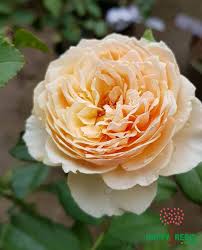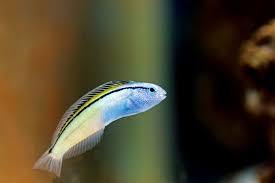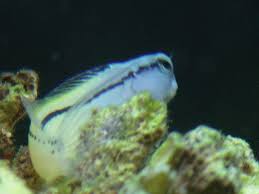
The timeless beauty of Rosa Gallica has inspired artists for centuries, captivating them with its exquisite blooms, vibrant colors, and delicate fragrance. In the world of art, Rosa Gallica has been a muse for painters, illustrators, and artists across various mediums, from classical masterpieces to contemporary interpretations. Let’s explore the profound influence of Rosa Gallica in the realm of painting and artistry.
#### Symbolism and Representation:
1. **Iconic Subject:** Rosa Gallica, also known as the French rose or Gallic rose, holds a prominent place in the artistic canon as one of the most iconic and beloved flower species. Its elegant form, rich symbolism, and historical significance have made it a favored subject for artists seeking to capture its allure on canvas.
2. **Beauty and Romance:** The lush petals, intricate details, and captivating fragrance of Rosa Gallica symbolize beauty, romance, and love in art. From classical still-life compositions to elaborate floral arrangements, artists have celebrated the timeless charm and romantic appeal of Rosa Gallica in their works.
3. **Historical Significance:** As one of the oldest cultivated rose varieties, Rosa Gallica carries a sense of nostalgia and historical resonance in art. Its associations with ancient civilizations, medieval gardens, and Renaissance courtly love have imbued it with cultural significance and inspired artists to depict it in various historical and mythological contexts.
#### Artistic Interpretations:
1. **Botanical Illustrations:** Botanical artists have meticulously documented Rosa Gallica and other botanical specimens through detailed illustrations, highlighting their botanical characteristics, color variations, and structural intricacies with scientific accuracy and aesthetic finesse. These botanical illustrations serve as valuable records of plant diversity and botanical knowledge, preserving the beauty of Rosa Gallica for future generations.
2. **Still Life Paintings:** Rosa Gallica frequently features in still life paintings, where it serves as a focal point amidst a tableau of fruits, flowers, and objects. Artists skillfully capture the luminous beauty and delicate textures of Rosa Gallica against contrasting backgrounds, showcasing its natural grace and ephemeral beauty in meticulously crafted compositions.
3. **Floral Portraits:** Portrait artists often incorporate Rosa Gallica into their compositions to add a touch of elegance, symbolism, or narrative depth to their subjects. Whether adorning the hair of a maiden, gracing the lapel of a suitor, or adorning a ceremonial bouquet, Rosa Gallica infuses portraits with a sense of refinement, sentimentality, and aesthetic allure.
#### Artistic Techniques:
1. **Color Palette:** Artists experiment with a diverse range of colors to capture the nuances of Rosa Gallica’s petals, from vibrant reds and pinks to soft pastels and velvety burgundies. They employ techniques such as layering, blending, and glazing to achieve depth, luminosity, and translucency in their floral renderings, imbuing Rosa Gallica with a lifelike vibrancy and visual richness.
2. **Composition:** Artists carefully consider composition, balance, and spatial arrangement when incorporating Rosa Gallica into their artworks, ensuring harmonious proportions, dynamic contrasts, and compelling focal points. Whether positioned as a central motif, a subtle accent, or a cascading cascade of blooms, Rosa Gallica enhances the overall aesthetic impact and narrative resonance of the artwork.
3. **Brushwork and Texture:** The expressive brushwork, delicate strokes, and textural nuances employed by artists convey the tactile qualities and organic vitality of Rosa Gallica, evoking a sense of intimacy, intimacy, and sensory immersion. Whether capturing the velvety softness of petals, the subtle gradations of color, or the intricate patterns of veins and stamens, artists infuse their portrayals of Rosa Gallica with a tactile realism and emotive resonance.
#### Conclusion:
Rosa Gallica’s enduring presence in art reflects its timeless appeal, symbolic potency, and aesthetic versatility as a subject of artistic inquiry and creative expression. Through botanical illustrations, still life paintings, floral portraits, and various artistic techniques, artists continue to celebrate the exquisite beauty, romantic allure, and cultural significance of Rosa Gallica, ensuring its legacy as an enduring muse in the annals of art history.
### Rosa Gallica in Art: Rosa Gallica in Paintings and Artworks
Rosa Gallica, also known as the French rose or Gallic rose, has left an indelible mark on the world of art, captivating artists with its timeless beauty, symbolic significance, and cultural resonance. Across centuries and continents, Rosa Gallica has been a cherished subject for painters, illustrators, and artists of various genres, who have sought to capture its ethereal charm and intrinsic allure on canvas and in other artistic mediums. Let’s delve into the multifaceted relationship between Rosa Gallica and the art world, exploring its portrayal in paintings and artistic masterpieces.
#### Symbolism and Representation:
1. **Beauty and Elegance:** Rosa Gallica’s exquisite blooms, delicate petals, and captivating fragrance have long symbolized beauty, elegance, and grace in art. Artists are drawn to its timeless allure, using it as a symbol of love, passion, and romance in their compositions.
2. **Spirituality and Symbolism:** In religious and spiritual art, Rosa Gallica often carries symbolic meanings associated with purity, devotion, and divine love. Its inclusion in religious paintings and iconography underscores its transcendent qualities and spiritual significance, serving as a sacred emblem in sacred narratives and devotional imagery.
3. **Cultural Significance:** As a cultural icon and botanical treasure, Rosa Gallica holds significant cultural and historical importance in art. Its associations with mythology, literature, and folklore enrich its portrayal in artistic representations, adding layers of meaning and narrative depth to its depiction in paintings and artworks.
#### Artistic Interpretations:
1. **Realism and Naturalism:** Many artists strive for realism and naturalism in their depictions of Rosa Gallica, meticulously capturing its botanical details, vibrant colors, and subtle nuances with precision and accuracy. Through careful observation and technical skill, they bring the beauty of Rosa Gallica to life on canvas, creating lifelike renditions that celebrate its natural splendor and floral elegance.
2. **Symbolic Allegories:** Some artists use Rosa Gallica as a symbolic motif in allegorical paintings and allegorical compositions, where it represents abstract concepts such as love, desire, beauty, or mortality. By imbuing Rosa Gallica with symbolic significance, artists infuse their works with layers of meaning and metaphorical resonance, inviting viewers to contemplate deeper themes and universal truths.
3. **Expressive Abstraction:** In abstract and experimental art, Rosa Gallica serves as a source of inspiration and creative exploration for artists seeking to push the boundaries of artistic expression. Through bold colors, gestural brushwork, and dynamic compositions, they interpret Rosa Gallica in innovative and unconventional ways, capturing its essence and energy in dynamic and expressive forms.
#### Artistic Techniques:
1. **Color and Light:** Artists use a rich and diverse palette of colors to convey the vibrant hues and luminous qualities of Rosa Gallica’s petals, from soft pastels to intense reds and velvety purples. They masterfully manipulate light and shadow to create depth, volume, and dimensionality in their floral compositions, enhancing the visual impact and emotional resonance of Rosa Gallica in their artworks.
2. **Composition and Design:** The composition and design of paintings featuring Rosa Gallica play a crucial role in shaping the viewer’s perception and emotional response. Artists carefully consider the placement, scale, and arrangement of Rosa Gallica within the pictorial space, striving to achieve balance, harmony, and visual interest in their compositions.
3. **Texture and Brushwork:** Texture and brushwork are essential elements in capturing the tactile qualities and organic beauty of Rosa Gallica. Artists employ a variety of brush techniques, from delicate strokes to bold impasto, to convey the softness of petals, the intricacy of foliage, and the velvety texture of blooms, adding tactile realism and expressive vitality to their floral portrayals.
#### Conclusion:
Rosa Gallica’s enduring presence in art reflects its profound impact and timeless allure as a subject of artistic inspiration and creative exploration. Across cultures, genres, and artistic movements, artists have celebrated the beauty, symbolism, and cultural significance of Rosa Gallica in their paintings and artworks, paying homage to its botanical splendor and symbolic resonance. Whether rendered with realism, symbolism, or abstraction, Rosa Gallica continues to inspire and captivate artists and audiences alike, ensuring its legacy as an enduring muse in the annals of art history.









